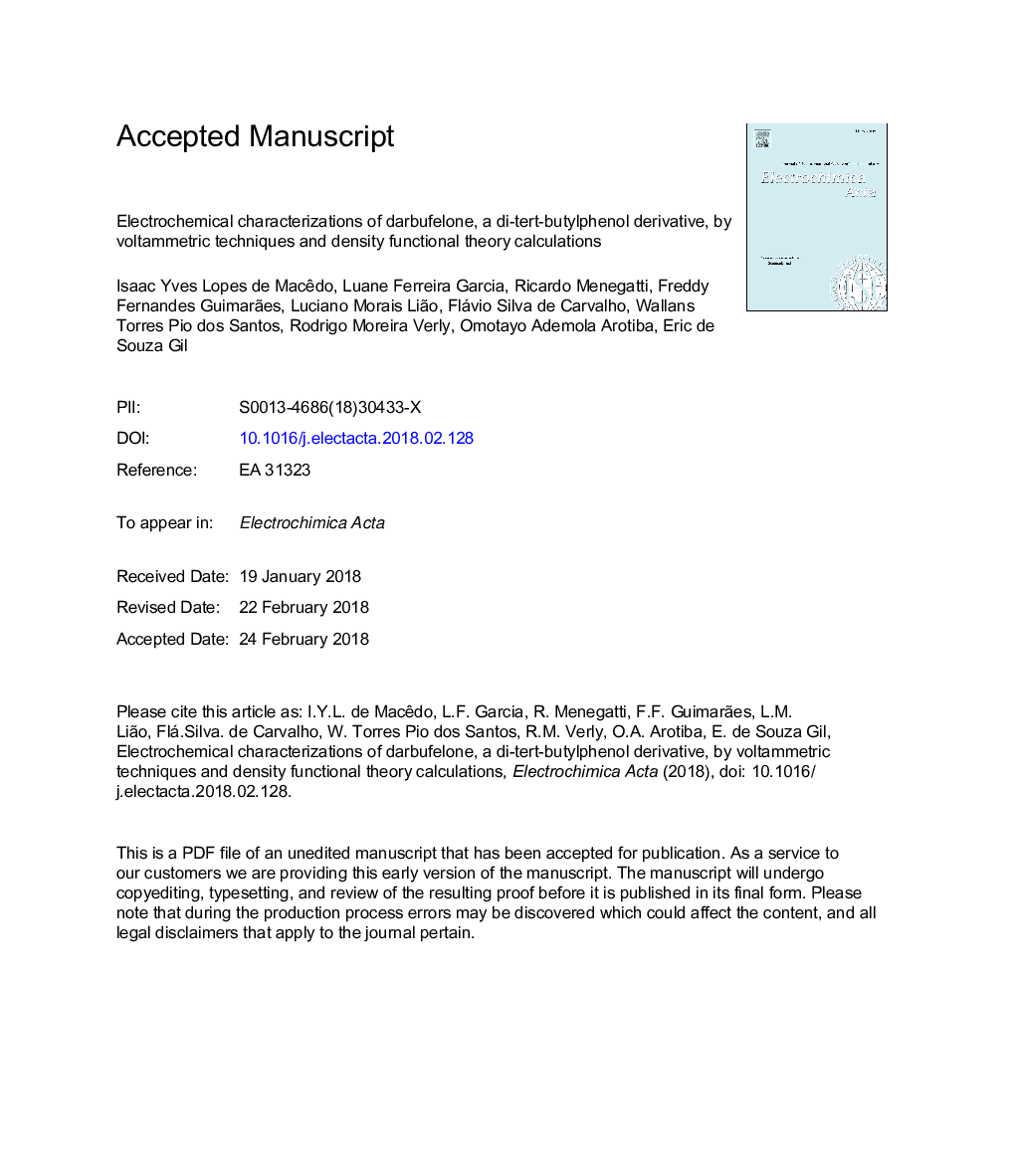| Article ID | Journal | Published Year | Pages | File Type |
|---|---|---|---|---|
| 6603847 | Electrochimica Acta | 2018 | 30 Pages |
Abstract
Darbufelone is a dual cyclooxygenase/lypoxygenase inhibitor that is emerging as a novel option for the treatment of inflammatory diseases. Akin to the synthetic antioxidants, butylated hydroxytoluene (BHT) and butylated hydroxyanisole (BHA), the electroactive di-tert-butylphenol moiety is also present in the darbufelone structure thus conferring reducing properties. The antioxidant properties of darbufelone BHT and BHA can be studied by means of voltammetric techniques while the influence of intrinsic molecular structural changes can be correlated to molecular electrostatic potential (MEP) and HOMO/LUMO energy profiles. In this report, the overall electronic structure of the darbufelone BHT and BHA for lowest energy enantiomorphs were computed. A comparison between the experimental and computational theoretical results was drawn. The charge distributions for the lowest energy enantiomorphs were evaluated for reduced and oxidized species in order to bring new insights about their redox properties. The electrochemical oxidation of BHT and BHA occurs in one-step, at peak potentials below 0.5â¯V. The redox behavior of darbufelone is characterized by two anodic peaks at Ep1a â¼0.2â¯V and Ep2a â¼0.5â¯V, and a less intense cathodic peak at Ep1c â¼0.2â¯V. Square wave voltammetric measurements were performed to confirm the reversibility and/or irreversibility of redox processes. From the HOMO energies calculated for BHT, BHA and darbufelone isomers, it was possible to infer that both anodic processes of darbufelone are related to the difference in the electronic structure of the diastereosiomers, which are further separated due to the passivation of the electrode surface by the isomers oxidized in the Ep1a â¼0.2â¯V anodic peak.
Keywords
Related Topics
Physical Sciences and Engineering
Chemical Engineering
Chemical Engineering (General)
Authors
Isaac Yves Lopes de Macêdo, Luane Ferreira Garcia, Ricardo Menegatti, Freddy Fernandes Guimarães, Luciano Morais Lião, Flávio Silva de Carvalho, Wallans Torres Pio dos Santos, Rodrigo Moreira Verly, Omotayo Ademola Arotiba, Eric de Souza Gil,
